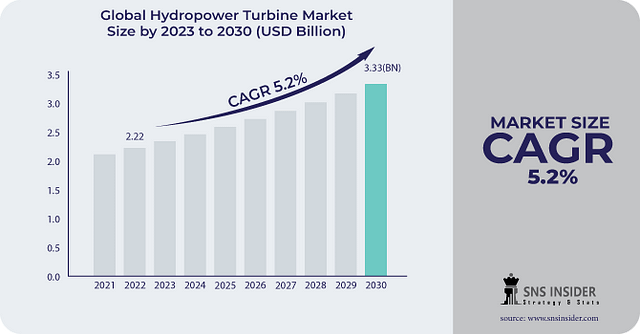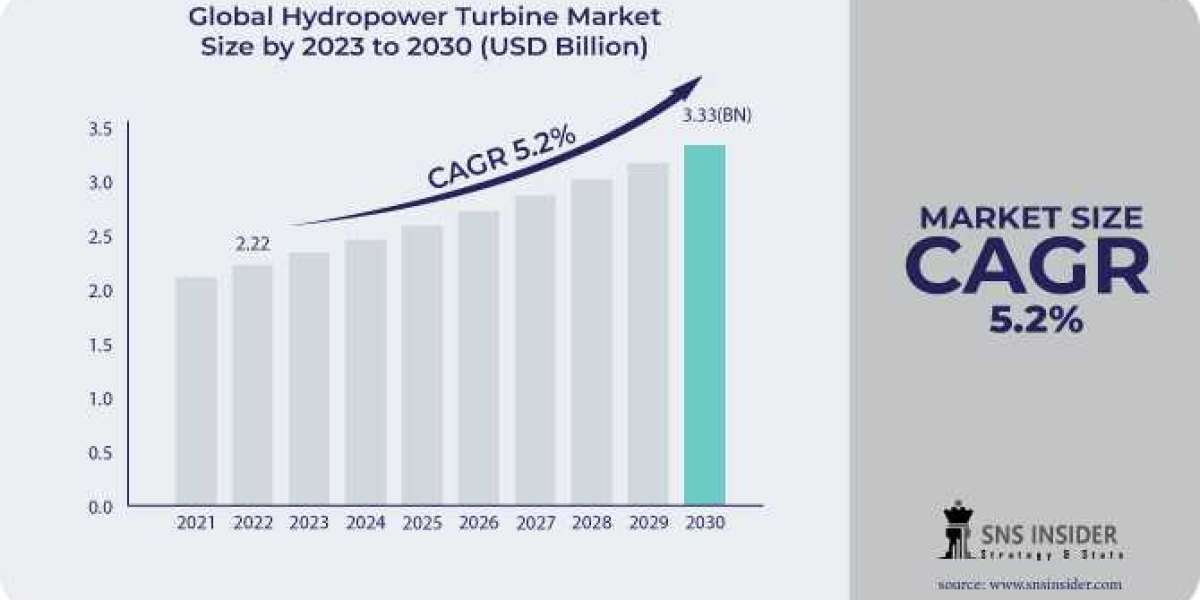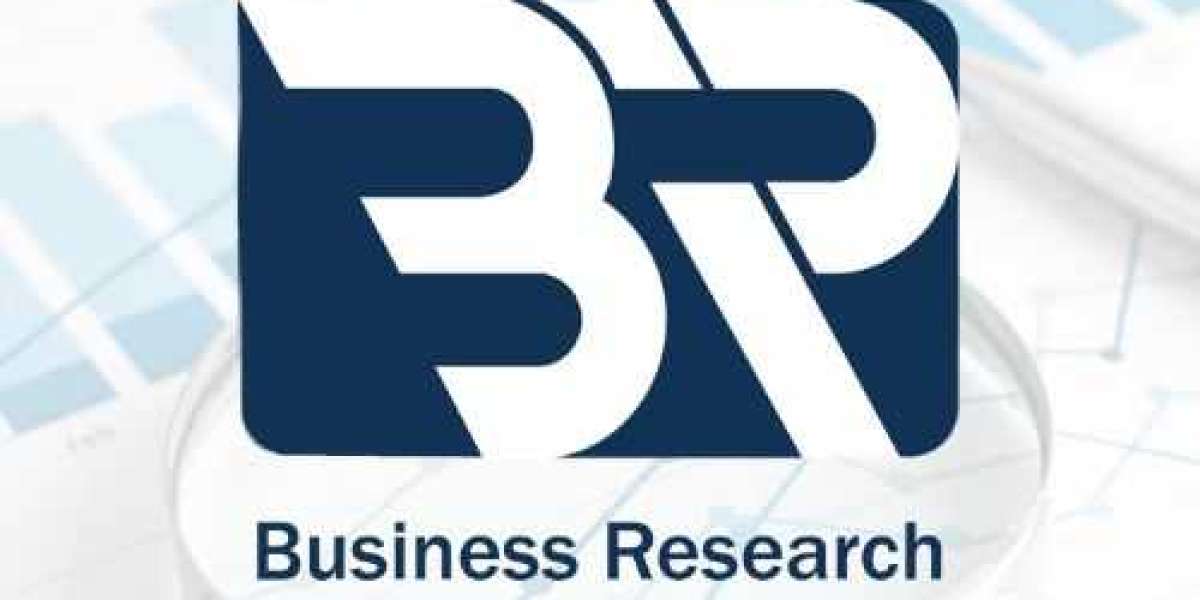
The Hydropower Turbine Market size was valued at USD 2.33 billion in 2023 and is expected to grow to USD 3.55 billion by 2031 and grow at a CAGR of 5.4% over the forecast period of 2024–2031.
Market Overview
Hydropower turbines are essential components of hydropower plants, where they convert the kinetic energy of flowing water into mechanical energy, which is then converted into electricity. These turbines play a pivotal role in the generation of renewable energy, which helps reduce greenhouse gas emissions and dependency on fossil fuels.
The hydropower turbine market is diverse, offering various turbine solutions based on the head type (the height of the water), turbine type (impulse or reaction turbines), and installation site (small-scale to large-scale hydro plants). The increasing focus on sustainability, government incentives for clean energy projects, and the push for low-carbon economies are propelling the growth of the hydropower turbine market.
Key Market Segmentation
The Hydropower Turbine Market is segmented by head type, turbine type, installation site, and region.
By Head Type
- Low Head: Low head turbines are typically used for sites with a relatively small drop in elevation (less than 30 meters). They are ideal for locations with a steady flow of water but lower energy potential. These turbines are commonly used in small-scale hydropower plants.
- Medium Head: Medium head turbines are suitable for sites with moderate elevations (30–150 meters). These turbines offer a balance between energy output and efficiency, making them a common choice for mid-sized hydroelectric plants.
- High Head: High head turbines are used in locations with a significant drop in elevation (above 150 meters). These turbines provide the highest energy output per unit of water flow and are typically installed in large hydropower plants, where large volumes of water can be harnessed.
By Turbine Type
- Impulse Turbine: Impulse turbines use the kinetic energy of water falling onto the blades to rotate the turbine, and are typically used in high-head sites. The Pelton turbine is a common type of impulse turbine, which is widely used in large-scale hydro plants.
- Reaction Turbine: Reaction turbines operate on both the pressure and velocity of the water, where water enters the turbine under pressure and drives the blades. These turbines are used in medium to low-head plants, such as Francis and Kaplan turbines, which are common in hydroelectric facilities worldwide.
By Installation Site
- Pico Hydro Plants: Pico hydro plants are small-scale hydroelectric systems, typically generating less than 5 kW. These are used for off-grid power generation in remote areas. With the increasing demand for decentralized energy, pico hydro plants are seeing a rise in popularity, especially in developing regions.
- Micro Hydro Plants: Micro hydro plants generate between 5 kW and 100 kW of electricity. These systems are often used in rural communities for local power generation, particularly in areas with abundant water resources.
- Mini Hydro Plants: Mini hydro plants range in capacity from 100 kW to 1 MW. These are often deployed in areas with moderate water resources and are suitable for small-scale commercial power generation, supporting industries and residential areas.
- Large Hydro Plants: Large hydro plants generate more than 1 MW of power and can range from several megawatts to gigawatts. These plants are typically built on rivers or reservoirs and are capable of generating significant amounts of electricity for both industrial and residential use.
By Region
- Asia Pacific (APAC): Asia Pacific is the dominant region in the hydropower turbine market, accounting for the largest share of both capacity and turbine installations. Countries like China, India, and Nepal are heavily investing in hydropower projects, making this region a significant contributor to global market growth.
- North America: North America, particularly the United States and Canada, has a mature hydropower market, with a focus on upgrading existing facilities and expanding capacity. Governments are providing incentives to promote renewable energy projects, including hydropower, which will support continued market growth.
- Europe: Europe is another key market for hydropower turbines, with countries like Norway, Sweden, and Austria leading the way in hydroelectric power generation. The European Union’s push for renewable energy sources is also driving the expansion of hydropower projects in the region.
- Latin America: Latin America is experiencing growth in hydropower turbine installations, driven by countries such as Brazil and Colombia, which are investing in large-scale hydroelectric projects. Hydropower is a key source of renewable energy in the region, contributing to both grid and off-grid power solutions.
- Middle East Africa (MEA): While the hydropower market in the MEA region is still emerging, countries like Ethiopia, Morocco, and South Africa are actively developing hydroelectric projects. The region has significant untapped potential for hydropower, and future developments are expected to increase market opportunities.
Market Drivers and Trends
- Rising Demand for Renewable Energy: As global efforts to combat climate change intensify, there is increasing demand for clean energy sources. Hydropower, as a renewable energy technology, is seeing growth in both developed and developing markets as countries seek to diversify their energy mix and reduce carbon emissions.
- Government Incentives and Investments: Many governments around the world are incentivizing the development of renewable energy projects, including hydropower. These incentives are contributing to the expansion of hydropower plants and the demand for hydropower turbines.
- Technological Advancements: Advancements in turbine technology, such as more efficient designs and materials, are driving the performance and cost-effectiveness of hydropower turbines. Innovations in turbine efficiency are allowing for greater energy generation from existing water sources.
- Focus on Small and Distributed Hydro Projects: There is increasing interest in small-scale hydro plants, including pico, micro, and mini hydro plants, which offer decentralized power generation solutions for off-grid communities and remote locations. These projects are helping to provide energy access to underserved areas while minimizing environmental impact.
Conclusion
The Hydropower Turbine Market is poised for strong growth from 2024 to 2031, fueled by the increasing demand for renewable energy sources and advancements in turbine technology. With a range of turbine types and installation sites available, the market is set to cater to both large-scale and small-scale hydropower projects. As countries around the world continue to invest in sustainable energy solutions, hydropower turbines will remain a critical component of the global energy infrastructure.
About the Report
This comprehensive market research report offers insights into the Global Hydropower Turbine Market, including market trends, key drivers, and regional opportunities. The report serves as a vital resource for stakeholders in the hydropower sector, providing essential information to navigate the growing market.
Read Complete Report Details of Hydropower Turbine Market 2024–2031@ https://www.snsinsider.com/reports/hydropower-turbine-market-3314
About Us:
SNS Insider is a global leader in market research and consulting, shaping the future of the industry. Our mission is to empower clients with the insights they need to thrive in dynamic environments. Utilizing advanced methodologies such as surveys, video interviews, and focus groups, we provide up-to-date, accurate market intelligence and consumer insights, ensuring you make confident, informed decisions.
Contact Us:
Akash Anand — Head of Business Development Strategy
info@snsinsider.com
Phone: +1–415–230–0044 (US) | +91–7798602273 (IND)














